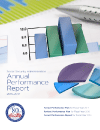- Home
- Agencies
- Department of Agriculture
- Department of Housing and Urban Development
- General Services Administration
- Department of Commerce
- Department of the Interior
- National Aeronautics and Space Administration
- Department of Defense
- Department of Justice
- National Science Foundation
- Department of Education
- Department of Labor
- Office of Personnel Management
- Department of Energy
- Department of State
- Small Business Administration
- Environmental Protection Agency
- Department of Transportation
- Social Security Administration
- Department of Health and Human Services
- Department of the Treasury
- U.S. Agency for International Development
- Department of Homeland Security
- Department of Veterans Affairs
- Goals
- Initiatives
- Programs
Primary tabs
Strategic Objective
Improve the Quality, Consistency, and Timeliness of Our Disability Decisions
Strategic Objective
Overview
Our employees and State partners in the DDSs are committed to balancing the need to make high-quality, accurate, and consistent decisions with the objective of decreasing the time claimants must wait for decisions at all levels.
We are using a new analytical tool that provides many of our ALJs and support staff with MI on their work relative to the rest of their office, their region, and the Nation. The information we gain from this analysis will help us to improve the way we review and decide disability cases, making our process simpler and more efficient.
We will continue our partnerships with other agencies to further modernize key aspects of our disability process. These include our partnership with the National Academy of Science’s Institute of Medicine to revise our disability guidelines to reflect the most up-to-date medical knowledge; our collaboration with the Department of Labor to update our occupational information; and our partnership with the research community, for example the Disability Research Consortium, to refine our policy development.
We will also expand the use of technology to improve quality and consistency. A few years ago, we implemented the electronic Claims Analysis Tool (eCAT) which assists disability examiners in documenting initial decisions to ensure compliance with agency policy. We plan to expand eCAT to process CDRs. Based on the success of eCAT, we used a similar approach to build a tool we can use at the appeals level. We will eventually extend eCAT to our field offices, resulting in our agency having one tool to assist in ensuring proper documentation and compliance with agency policy throughout the entire disability process.
Expanding the use of video hearings – one of our key initiatives – will help increase efficiency and improve customer service. Specifically, it will enable us to balance workloads across the country, reduce the need for (and the costs of) our ALJs and other hearing office staff to travel between offices and to remote sites to hold hearings, and reduce the need for claimants to travel long distances to hearing offices. We also are working to expand video hearing participation more broadly to allow more attorneys and non-attorney representatives to install and use their own video equipment to attend hearings from their own offices.
Strategies:
- Expand use of MI to identify training needs and areas for improvement;
- Broaden use of case analysis tools;
- Expand use of predictive modeling;
- Simplify policies;
- Collaborate with the Bureau of Labor Statistics to collect updated occupational information; and
- Formalize our pre-decisional quality review processes to increase national uniformity.
Progress Update
We highlighted this objective as a focus area for improvement. We took the following steps in FY 2015 to improve the quality, consistency, and timeliness of our disability decisions (see Key Initiatives and Performance Measures for more details):
• Completed Administrative Law Judge (ALJ) focus reviews to provide ALJs with feedback and training resources to improve the quality of decisions;
• Added the ability for all sites to process electronic adult initial continuing disability review in the electronic case analysis tool;
• Released the Electronic Bench Book version 5.0;
• Established a medical experts committee to advise on advancements relevant to making disability decisions;
• Made the inline quality review process more comprehensive;
• Increased hearing capacity by adding additional video hearing sites;
• Completed deliverables on the Bureau of Labor Statistics project; and
• Prepared for the receipt of data collected by the Bureau of Labor Statistics in September 2015.
Next Steps
• Examine opportunities to develop new applications to address existing and emerging management information needs;
• Continue leveraging management information to identify training needs;
• Add functionality to the Electronic Case Analysis Tool to support additional claim types;
• Develop more functionality in the Electronic Bench Book;
• Continue development and testing of predictive modeling projects in the Office of Disability Adjudication and Review;
• Update research base for the vocational factors considered in disability evaluations; and
• Develop and submit at least three rules for public comment, five final rules, and three Social Security Rulings to update the medical listing of impairments.









